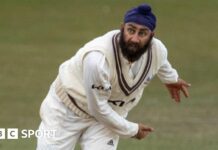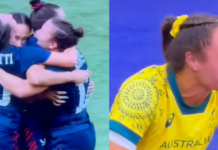Despite the distractions of the Olympics, there will be a new round of hand-wringing after the latest humiliation of the West Indies cricket team on their just-concluded tour of England. They lost the three-match series 3-0; two of the five-day Tests within three days, and one within four.
In the search for answers to why, Cricket West Indies (CWI), the regional game’s governing body, must first instruct the team’s captain, Kraigg Brathwaite, and its manager, Andre Coley, to keep their mouths shut, rather than subject West Indian cricket fans to the usual bout of diarrhoeic banalities about lessons learnt and/or of corners about to be turned.
Second, in attempting to understand this long malady of West Indies cricket (apart from lamenting the absence of marquee names from Tests, regurgitating supposed plans to resuscitate the game at the grassroots level and/or its ideas for the further commercialising of the sport), CWI should commission a group of political historians and social anthropologists to help explain what has gone awry for the better part of three decades. And it should listen.
Cricket West Indies must then undertake one more critically important mission: it must revisit the 2015 report of Professor Eudine Barriteau and dissolve itself in preparation for the creation of a new governance structure. Broad guidance on the new foundations should come from the 2007 report by the former Jamaican prime minister, P.J. Patterson.
‘WHAT DO THEY KNOW OF CRICKET WHO ONLY CRICKET KNOW?’
For good measure, and in preparation for the reforms, CWI should make it mandatory that each member of its board, especially its president, Dr Kishore Shallow, and its CEO, the Englishman Johnny Grave, read C.L.R. James’ Bound and Boundary, and made to internalise James’ observation of “What do they know of cricket who only cricket know?”
After nearly two decades at the pinnacle of the global sport, West Indies cricket, despite occasional glimmers of a possible return to glory, has been in the doldrums since the mid 1990s – far longer than the cyclical downturns that teams usually go through.
The deeper pain for West Indian cricket fans, however, is not merely that the team loses. Rather, it is the seeming absence of character in their play, which transcends innate physical abilities.
Indeed, few will question the athleticism and/or hand-eye coordination of vast numbers of West Indian players over the past 30 years. Several West Indian batters are, or have been, among the most exciting players in the game’s shortest format, T20. They possess a phenomenal ability for hitting spectacular sixes.
However, in the longer formats of the game, particularly in five-day Test matches, the region’s team displays an almost singular inability, or perhaps unwillingness, to concentrate for long periods.
In the England series, only in a single Test, the second, did they hold the initiative for an entire session of play. Batters were often out in soft dismissals, or playing inexplicable, extravagant shots. Which, in either case, points to lapses in concentration.
But even in T20, where hitting skills of the top West Indian batters are not in doubt, the team is often found wanting when concentrated strategic effort is required. For instance, in the recent T20 World Cup in the Caribbean, the West Indies, playing South Africa on a troublesome batting surface, faced 57 dot balls, that is, deliveries from which they did not score. This translates to 47.5 per cent of the 120 legitimate deliveries the West Indies were allowed in their innings.
The batters, so attuned to the extravagant big hits, scored little when big shots were not on. Many opportunities for runs went abegging.
UNASHAMED BY POOR PERFORMANCES
Moreover, recent generations of West Indies players appear to be unashamed by poor performances. After each defeat there are the generic inanities from players and managers about what was learnt from the outing, and of ‘going back to the drawing board’. These are followed by, what for the fans, is the next humiliation, with little apparent effect on the players.
The social anthropologists will hopefully explain the emerging dynamics in West Indian societies that define the young people who play cricket, as well as their approach to the sport.
A cursory analysis of West Indian cricket suggests that its growth has largely mirrored the sociopolitical dynamic of the region, starting with the emergence of the likes of George Headley and Constantine in the 1930s, a period of political and social awakening in the Caribbean.
The 1950s and ‘60s, with the rise of the ‘Three Ws’ and Sobers, coincided with a pre- and early post-independence Caribbean nationalism that transcended the demise of the West Indies Federation.
The golden era of the 1970s and 1980s, with Clive Lloyd, Viv Richards, the fast-bowling quartets, and a never-say-die spirit, came in a period of ideological ferment, including the Black Power movement.
Perhaps there is nothing to these perceived correlation between social developments. It may be all placebo.
Nonetheless, there is an opportunity to study the underlying societal forces that help to shape West Indian cricket. In any event, fixing the crisis will demand a deeper stakeholder engagement, beyond what either exists now in CWI or what the organisation is capable of achieving with its current structure.
P.J. Patterson’s report, as we concluded nearly 21 months ago, provides a good outline for thinking about the future structure of West Indies cricket.
Source link : https://jamaica-gleaner.com/article/commentary/20240731/editorial-fixing-west-indies-cricket
Author :
Publish date : 2024-08-01 00:20:29
Copyright for syndicated content belongs to the linked Source.




















































